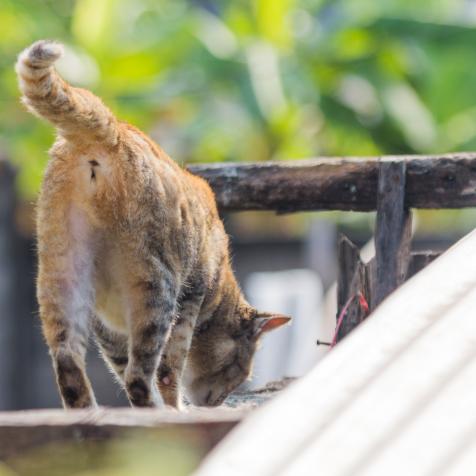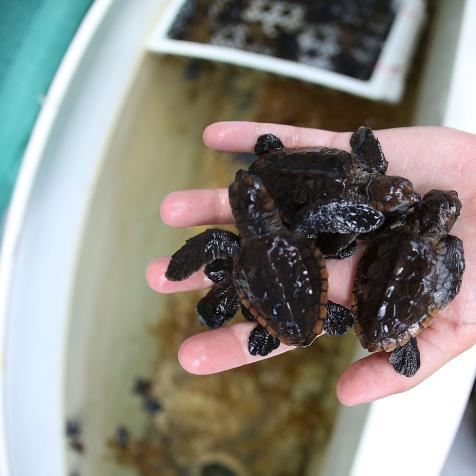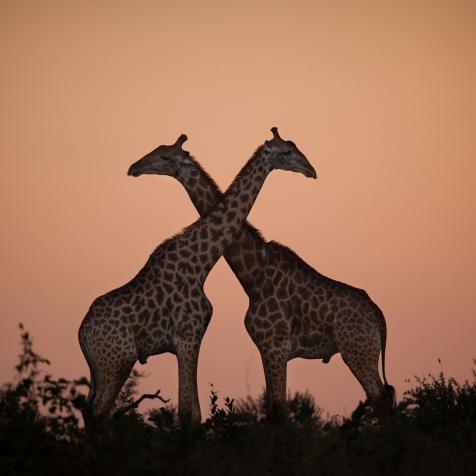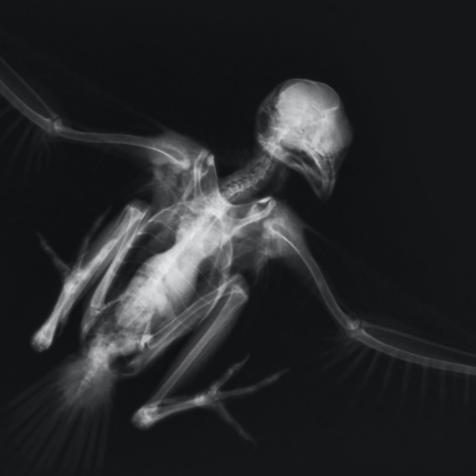
Why Do Islands Make Some Animals Huge and Others Tiny?
You've probably heard of the komodo dragon before. At 10 feet (3 meters) long and 300 pounds (136 kg), it's the largest lizard in the world. How about elephant birds? These giants used to live on the island of Madagascar until they went extinct about 1,000 years ago. But then, there are also miniature versions of animals that live on islands as well — dwarf mammoths, dwarf hippopotamuses, and even Homo floresienses, a miniature cousin of modern humans that would have stood just over 3 feet (1 meter) tall. So what's the deal? Do islands make animals big or small? The short answer is "both."

Shutterstock
They Might Be Island Giants
Biologists call it "the island rule," and it describes an apparently paradoxical trend in evolution. In its most basic form, it goes something like this: Large species, such as elephants and hippos, tend to get smaller if they spread to an island environment, while small species, such as rodents and insects, have a tendency to get bigger. As you can probably guess, that's not the whole story, but one thing is clear: Something weird happens to animals when they cut themselves off from the mainland.
The phenomenon was first pointed out by a researcher named J. Bristol Foster, which is why it's often called "Foster's rule" instead. Fresh out of his doctoral program in 1964, the young scientist penned his observations in a two-page paper that turned out to have a lasting impact on the field. He also offered a couple of explanations for the strange pattern. In short, Foster thought that small critters would face both fewer predators and fewer competitors in island environments, giving them plenty of space to get bigger. But big animals like elephants don't really have to worry much about predators or competitors — their chief concern would be a lack of resources to sustain themselves. For them, a smaller habitat means they have to be smaller to survive.
As we stated earlier, there's more to the island rule than what Foster originally described. But before we get into the complications with the rule, there's one thing that's worth pointing out. The change in size that hits so many island species isn't just widespread; it's also incredibly fast. The mammoths of Wrangel Island off the coast of Siberia shrunk from six tons to two tons over the course of just 5,000 years. That's barely a blink of an eye in evolutionary terms. So whatever benefit the change of size grants island animals, it's clearly significant enough to kick natural selection into overdrive.
Island Rules Are Made to Be Broken
In 1978, another young biologist named Ted Case took a look at Foster's rule and found it intriguing, but incomplete. He saw places where the simple "big becomes small, small becomes big" dichotomy became a lot more complicated — namely, he found that the chuckwalla, a reptile he had studied quite closely, would sometimes react to being isolated on an island by becoming larger and sometimes by growing smaller. That doesn't really track with the rule as we understand it. Another quirk that Case found involved a pair of rattlesnakes that shared the same ecosystem as his beloved chuckwalla. On the mainland, the red diamond rattlesnake is twice as big as the speckled rattlesnake, but on the island Angel de la Guarda, their sizes were reversed. Seems like they could have just come over and stayed the same size, right? Maybe ... if they'd come over at the same time.
The crux of the issue is that it isn't just about the island itself driving a change in size, but also what the ecological space has room for. A genetic analysis of those two snakes, for example, found that the speckled rattlesnake had diverged more from its mainland relatives than the red diamond one had, meaning the former probably arrived well before the latter. So by the time the red diamond rattlesnake landed on Angel de la Guarda, there just wasn't space for a big rattlesnake. It had to shrink in order to find its niche. To Case, the central factor that drives the changing size is energy consumption: All changes arise from the animal's energy needs, and how much energy it can gain in any given amount of time. This does often lead to drastic changes in size, but it's not always as simple as a reversal in relative size.
As far as energy consumption goes, both large and small sizes have their benefits and their drawbacks. Big animals do better when it comes to competing for resources, and they are much better at storing energy for when times get lean. But small animals need fewer resources to begin with, and they tend to survive cataclysmic events like floods and fires better. In short, whether an animal gets bigger or smaller on an island might have less to do what size they started out as and more to do with what the island's existing ecosystem is capable of supporting.
There's one more example that's just too good not to mention. Remember the komodo dragon, the largest lizard in the world? It's true, it might be a result of island species tending toward either gigantism or dwarfism — but it's not a giant: It's a dwarf. The Australian monitor lizards that came before the dragon would have been truly massive: We're talking twice as long, and more than four times heavier. It just goes to show how "huge" is in the eye of the beholder.
This article first appeared on Curiosity.com.


















